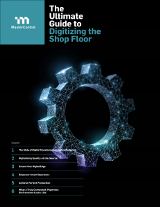
GxP Lifeline
When Quality Met Manufacturing
It’s February, which means that stores are flooded with Valentine’s Day candy, flowers and greeting cards. While the holiday is clearly geared toward romantic relationships, relationships in general get extra attention this month. However, you won’t find any valentines for one of your most important professional relationships: that of quality and manufacturing. It’s not too much of a stretch to say the tension between these two groups mirrors that of the leads in any given rom-com. The setup of the rom-com is already there but avoiding all the drama is possible with the right solution.
Four CAPAs and a Training Task
A big problem in many rom-coms is a severe lack of communication. In many of these films, there would be no plot and no conflict if the two parties would be transparent with each other from the get-go. The couple are only able to form a successful relationship once they’ve finally sorted out whatever caused the problem in the first place. If manufacturing and quality want to form a successful relationship, they also need to learn to communicate.
A common scenario is when quality reviews the production record and finds an illegible entry. Then the manufacturing employee has to leave the floor, go to quality and correct the entry. Another problem is when there’s a change to work instructions because of a corrective and preventive action (CAPA), but this information doesn’t get passed on to those who use the work instructions on the floor. So, they’re not trained on the new procedure, which will be problematic during the next audit or inspection.
In most rom-coms, the two leads can resolve their miscommunication by talking to each other. That doesn’t work so well in a regulated environment where dozens to thousands of employees might be involved. That’s why you need a solution that enables communication across the board. Take MasterControl Manufacturing Excellence™, for example. You can use the system to automatically notify employees when work instructions change and automatically send out training tasks to those people. If the employee isn’t on the list but needs to perform the task, he or she can complete in-line training on the manufacturing floor immediately.
You’ve Got MES
Rom-coms almost always end on a “happily ever after” note. The conflict that’s run the course of the movie is somehow easily resolved. The two main characters profess their love for each other, share a kiss, and upbeat music plays as the screen fades to black. A movie has to end somewhere, but real life is much more complicated than that. Actual relationships involve arguments, compromises, and two people that don’t see eye to eye on everything. Sometimes this is because their goals are taking them in completely different directions. But sometimes it’s a matter of not realizing that those goals can complement, not compete, with each other.
This is precisely the problem between manufacturing and quality. Too often these two departments are at odds with each other because they see their goals as mutually exclusive. Manufacturing can’t make as much product as possible as quickly as possible because quality slows things down. And quality can’t ensure safe, effective, compliant products because manufacturing is moving too quickly which can introduce human error into the product records. At least, that’s the assumption. Like so many plot points in rom-coms, this is based on misconceptions. The truth is, when quality and manufacturing have the right tools, they complete each other.
So, what are the right tools? Most rom-com couples could benefit from couple’s therapy, but for the quality-manufacturing relationship an automated, cloud-based software solution will do the trick. If you already have a manufacturing execution system (MES), you might think you’ve got this covered, but in most cases an MES’s aren’t seen by those working the manufacturing floor. That doesn’t mean giving up your MES; it means finding a solution that integrates with it to bring the benefits of automation to the workers on the line. This benefits everyone by getting rid of paper, implementing review by exception, and providing electronic work instructions.
How to Lose the Paper in 10 Days
We can’t offer a 10-day guarantee, but we can offer a paperless guarantee. Manufacturing Excellence offers digitized production records, digitized work instructions, and the ability to train employees while they’re working the line. It also integrates with your MES and quality management system (QMS) to give you a solution that appeals to both quality and manufacturing, removing much of the conflict in the relationship. Instead of the cliché flowers and candy this year, heal the rift in your relationship with a solution that automates your whole manufacturing process and gets paper off the floor.
To learn how MasterControl helps bridge the digital gaps that exist with paper-based production record processes that brings quality and manufacturing together, register for the March 12 webinar, “Manufacturing Excellence: Fully Digitize Your Production Environment to Drive Smart Manufacturing.”

